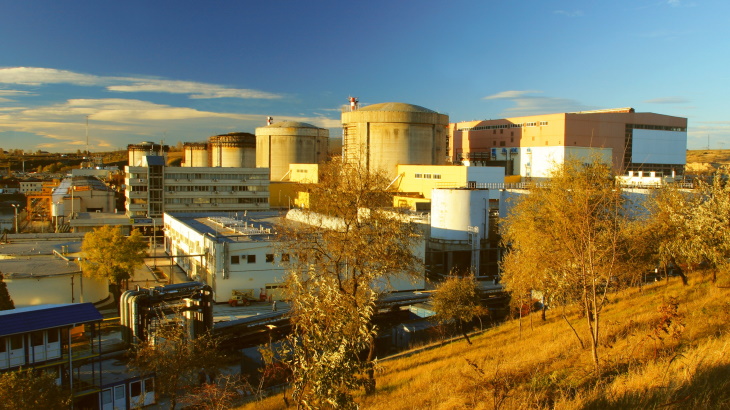The signing of the support agreement between the Romanian government and Nuclearelectrica allows the start of the next phase of the project to construct units 3 and 4 of the Cernavoda nuclear power plant.

Most of the work on the units was done in the 1980s (Image: Nuclearelectrica)
Phase II of the project includes the conclusion of contracts for the "critical engineering necessary to update the project, the updating of the project budget, the structuring and contracting of the financing and the agreement of an appropriate contractual architecture for the implementation of the project" as well as getting European Commission and Euratom go-ahead for the project and state aid, as well as "obtaining the Nuclear Safety Authorisation for the Construction phase and making the Final Investment Decision to proceed to Phase III (Construction)".
Phase 1 of the project, which began in 2021, was for the preparatory stage including setting up the project company Energonuclear SA and the compiling of engineering and safety documentation required for the project start-up.
Cosmin Ghita, CEO of Nuclearelectrica, said: "The signing of the Support Agreement between the Romanian State and Nuclearelectrica ... shows the firm support of the Romanian State for the development of the Romanian nuclear programme ... Units 3 and 4, which are scheduled to enter commercial operation in 2030 and 2031 respectively, will add another 10 TWh of clean, stable and affordable energy to the national energy system, supporting energy security. In addition, the four units at Cernavoda will generate about 66% of Romania’s clean energy, with an impact in achieving Romania’s decarbonisation targets. The units 3 and 4 project is particularly important for Romania’s energy future and consumer protection and, at the same time, a source of pride for the entire Nuclearelectrica team."
The Support Agreement means the Romanian government is providing state guarantees to the financiers of the project, with Nuclearelectrica specifiying this was "within the framework of any intergovernmental support agreements or memoranda or outside such agreements; implementing the 'Contracts for Difference' scheme and adopting administrative and/or legislative measures to ensure compliance with the technical criteria set out in the European Commission’s Complementary Delegated Act; the contribution in kind by the quantity of heavy water and uranium octoxide related to the first nuclear fuel load, cooling water for the operation of the two nuclear units and the completion of the electricity transmission lines necessary for the purpose of connection to the National Energy System and the discharge of the electricity produced in the two nuclear units".
Nuclearelectrica said the intention of the company and the Romanian state "is to carry out this project in a Euro-Atlantic consortium on the basis of the agreement between the Government of Romania and the Government of the United States of America on cooperation in relation to nuclear energy projects at Cernavoda and in the civil nuclear energy sector in Romania".
It added that at COP27 last year, "the US Exim Bank announced the issuance of two letters of interest for the financing of technical services provided by the US in connection with the Cernavoda units 3 and 4 project - Exim may consider funding up to USD50 million from the US export contract for pre-project technical services" in Phase II and in Phase III "may consider funding up to USD3 billion from US export contract for engineering and project management services for the contract to complete" the two units.
Cernavoda is the only nuclear power plant in Romania and consists of two 650 MWe pressurised heavy-water reactors. Unit 1 went into commercial operation in 1996 and unit 2 in 2007. Operator Nuclearelectrica plans to extend the operating life of unit 1 to 60 years. Most of the work on units 3 and 4 - like units 1 and 2, CANDU-6 reactors - was done in the 1980s prior to the fall of the government of Nicolae Ceausescu in 1989.
In October, Romania said Canada and the USA were both offering to help with the financing of the construction of Cernavoda 3 and 4, which has an estimated cost of EUR7 billion (USD7.4 billion). Romania also has plans for small modular reactors (SMRs), with a Memorandum of Understanding signed between Nuclearelectrica, US firm NuScale and E-INFRA relating to the proposed site at Doicești, the location selected for the country's first SMR.
Researched and written by World Nuclear News